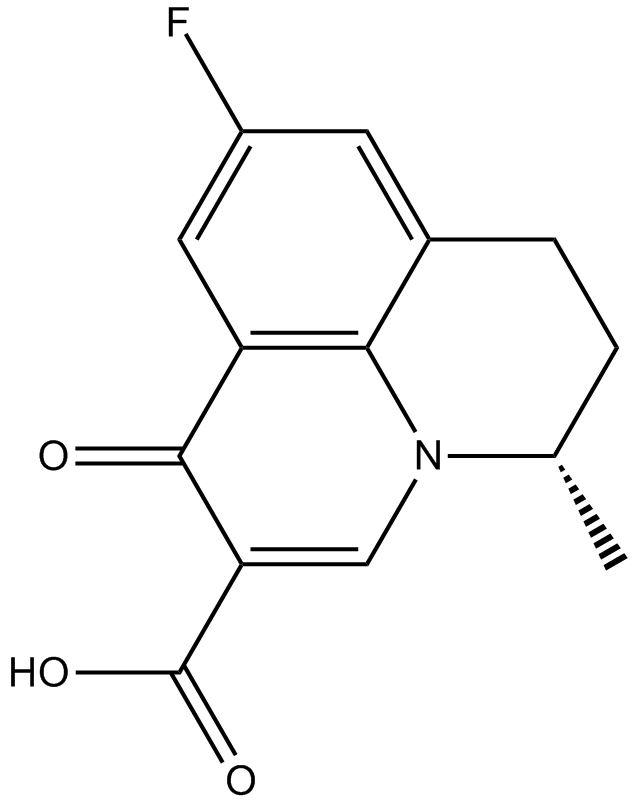Flumequine (Synonyms: (±)-Flumequine, R-802) |
| カタログ番号GC16455 |
フルメキン (R-802) はキノロン系抗生物質であり、トポイソメラーゼ II 阻害剤として作用し、IC50 は 15 μM (3.92 μg/mL) です。
Products are for research use only. Not for human use. We do not sell to patients.

Cas No.: 42835-25-6
Sample solution is provided at 25 µL, 10mM.
Flumequine (R-802) is a quinolone antibiotic, and acts as a topoisomerase II inhibitor, with an IC50 of 15 μM (3.92 μg/mL).
Flumequine (R-802) is a topoisomerase II inhibitor, with an IC50 of 3.92 μg/mL, and less potently inhibits Gyrase, with an IC50 of 1764 μg/mL. Flumequine (0-625 μg/mL) increases migration of nuclear DNA from CHL cells[1]. Flumequine (R-802) inhibits Spanish field isolates of B. hyodysenteriae with MIC50 and MIC90 of 50 and 100 μg/mL, and MBC50 and MBC90 of 50, 200 μg/mL, respectively[2]. Flumequine (R-802) suppresses A. salmonicida isolates with MIC ranging from 0.06 to 32 μg/mL[3].
Flumequine (R-802) (0-500 mg/kg, p.o.) causes dose-related DNA damage in the stomach, colon, and urinary bladder of mice, 1 and 3 h but not 24 h after its administration[1].
References:
[1]. Kashida Y, et al. Mechanistic study on flumequine hepatocarcinogenicity focusing on DNA damage in mice. Toxicol Sci. 2002 Oct;69(2):317-21.
[2]. Aller-Morán LM, et al. Evaluation of the in vitro activity of flumequine against field isolates of Brachyspira hyodysenteriae. Res Vet Sci. 2015 Dec;103:51-3.
[3]. Giraud E, et al. Mechanisms of quinolone resistance and clonal relationship among Aeromonas salmonicida strains isolated from reared fish with furunculosis. J Med Microbiol. 2004 Sep;53(Pt 9):895-901.
Average Rating: 5 (Based on Reviews and 28 reference(s) in Google Scholar.)
GLPBIO products are for RESEARCH USE ONLY. Please make sure your review or question is research based.
Required fields are marked with *




















